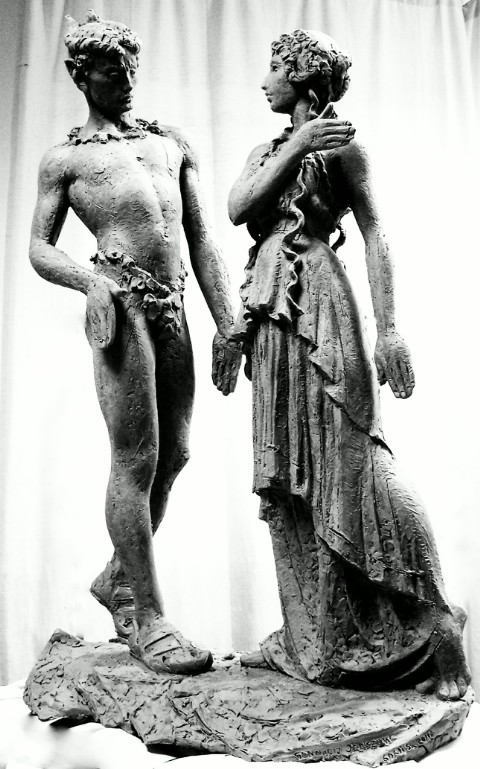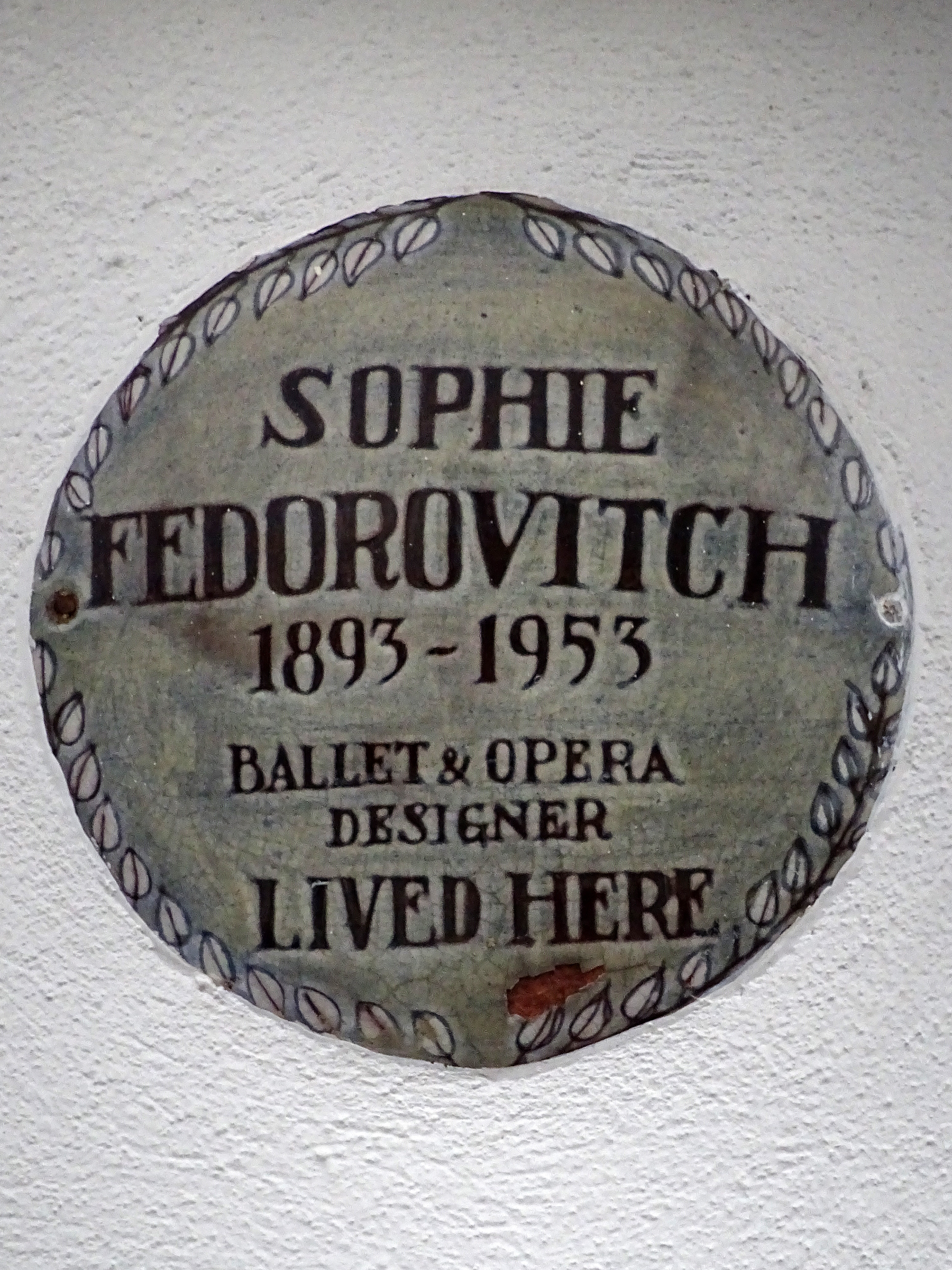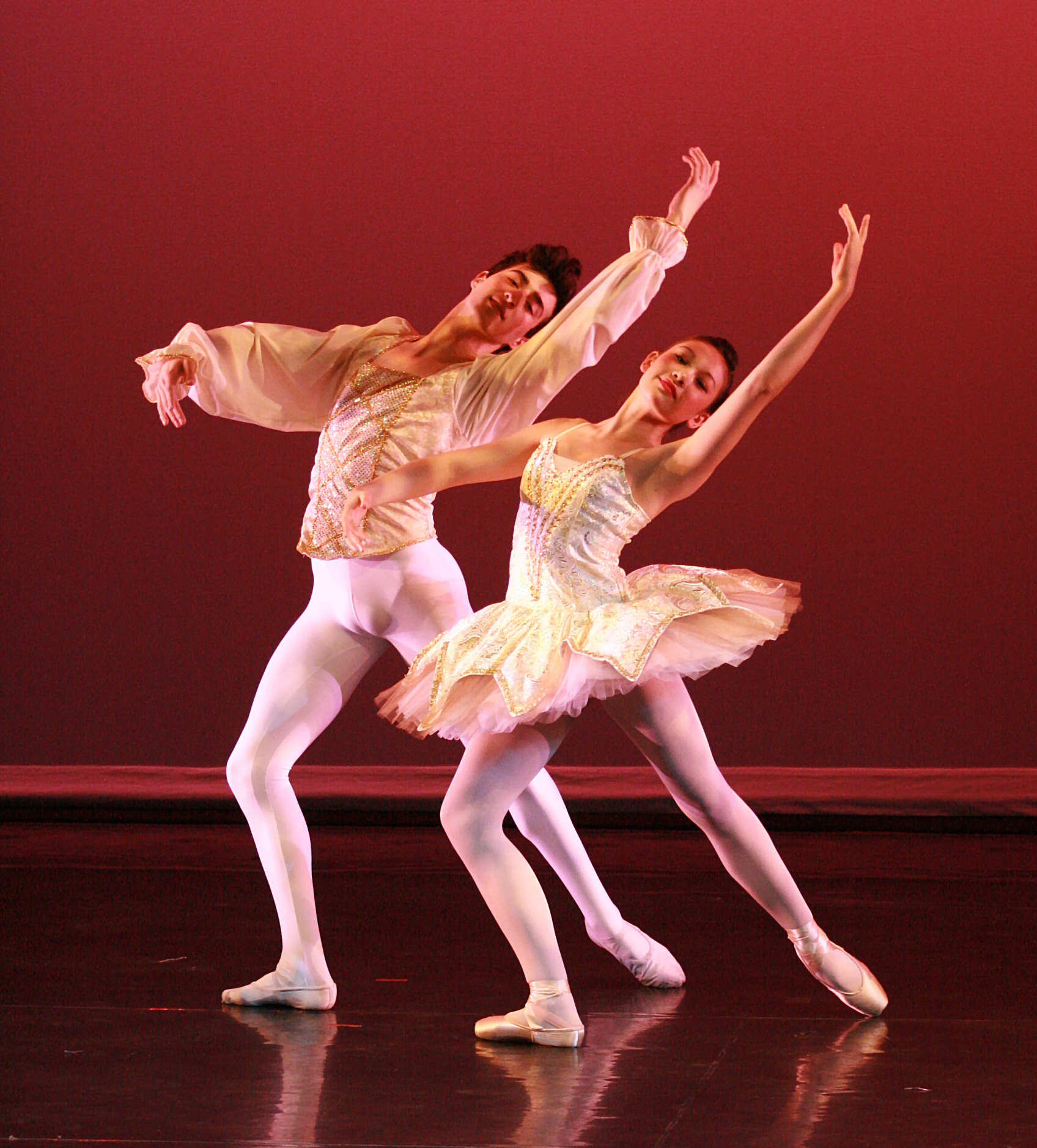|
A Month In The Country (ballet)
''A Month in the Country'' is a narrative ballet created in 1976 with choreography by Frederick Ashton, to the music of Frédéric Chopin (three works for piano and orchestra) arranged by John Lanchbery. It is based on the play by Ivan Turgenev of the same name, and lasts for about 40 minutes.Vaughan D. ''Frederick Ashton and his Ballets.'' A & C Black Ltd, London, 1977. History Ashton had had the idea of a ballet based on ''A Month in the Country'' since seeing the play in the 1930s at the Westminster Theatre, but a meeting with Isaiah Berlin in the late 1960s helped him decide on the subject, and he took up Berlin's suggestion of using the music of Chopin. During the preparation of the ballet, Ashton encouraged the dancers to see the play in London with Dorothy Tutin as Natalia.Kavanagh J. ''Secret Muses: The Life of Frederick Ashton.'' Faber & Faber Ltd, London, 1996. Ashton also credited Michael Somes "who brought the music used in the ballet to my notice" and Martyn Thomas who ... [...More Info...] [...Related Items...] OR: [Wikipedia] [Google] [Baidu] |
Narrative Ballet
A narrative ballet or story ballet is a form of ballet that has a plot and characters. It is typically a production with full sets and costumes. It was an invention of the eighteenth century. Most romantic and classical ballets of the 19th century were narrative ballets. Among the most well known are ''Swan Lake'', '' The Sleeping Beauty'', and ''Cinderella''. For these and other classic narrative ballets it is common for ballet directors to create their own choreography, while maintaining the plot and music used by the original 19th-century choreographer. Kenneth MacMillan and Frederick Ashton were neoclassical ballet choreographers that created original narrative ballets in the 20th century. Narrative ballets are essential to a ballet company's repertoire, because they tend to generate the highest sales and bring families with children to see the ballet. Many newer narrative ballets are adapted from familiar stories or literature because they are recognizable to audiences. N ... [...More Info...] [...Related Items...] OR: [Wikipedia] [Google] [Baidu] |
Bruce Sansom
Bruce Edward Sansom (born September 1963) is a British former ballet dancer, and assistant artistic director and ballet master at San Francisco Ballet. Bruce Sansom was born in September 1963 in Newbury, trained at the Royal Ballet School, and joined the Royal Ballet in 1982, following performances as Colas in ''La Fille mal gardée'' at the Royal Ballet School's Annual Performance in 1981, and a solo in ''Here We Come'' in 1982. He became a principal dancer in 1987. He retired from dancing in 2000. In his early years with the Royal Ballet Sansom danced small roles such as a cavalier in '' The Sleeping Beauty'', a cast member in ''Dances of Albion: Dark Night Glad Day'' and ''Voluntaries'', a Mountaineer in ''Façade'', Sailor Boy in ''Enigma Variations'', Mandolin Dance in '' Romeo and Juliet'' and a soldier in the premiere of '' Different Drummer''. [...More Info...] [...Related Items...] OR: [Wikipedia] [Google] [Baidu] |
Alexander Grant (dancer)
Alexander Marshall Grant (22 February 1925 – 30 September 2011) was a New Zealand ballet dancer, teacher, and company director. After moving to London as a young man, he became known as "the Royal Ballet's most remarkable actor-dancer in its golden period from the 1940s to the 1960s." Early life and training Alexander Marshall Grant was born in Wellington, New Zealand, the son of hoteliers, during the prosperous 1920s. He resolved to become a professional dancer at the age of six, when he was taught to perform a simple folk dance, a Ukrainian ''trepak'', and discovered the joy of performing. He began taking dancing lessons when he was seven and, under the tutelage of Kathleen O'Brien and Jean Horne, was an experienced amateur by age fifteen. Inspired by performances of Russian ballet troupes that he saw in Australia, he had already begun to develop the exuberant, energetic, and highly theatrical style that would become his trademark in later life. As a result, he won a scho ... [...More Info...] [...Related Items...] OR: [Wikipedia] [Google] [Baidu] |
British Film Institute
The British Film Institute (BFI) is a film and television charitable organisation which promotes and preserves film-making and television in the United Kingdom. The BFI uses funds provided by the National Lottery to encourage film production, distribution, and education. It is sponsored by the Department for Digital, Culture, Media and Sport, and partially funded under the British Film Institute Act 1949. Purpose It was established in 1933 to encourage the development of the arts of film, television and the moving image throughout the United Kingdom, to promote their use as a record of contemporary life and manners, to promote education about film, television and the moving image generally, and their impact on society, to promote access to and appreciation of the widest possible range of British and world cinema and to establish, care for and develop collections reflecting the moving image history and heritage of the United Kingdom. BFI activities Archive The BFI maint ... [...More Info...] [...Related Items...] OR: [Wikipedia] [Google] [Baidu] |
The Dream (ballet)
''The Dream'' is a one-act ballet adapted from Shakespeare's '' A Midsummer Night's Dream'', with choreography by Frederick Ashton to music by Mendelssohn arranged by John Lanchbery. It was premiered by The Royal Ballet at the Royal Opera House, Covent Garden on 2 April 1964 in a triple bill with Kenneth MacMillan's ''Images of Love'' and Robert Helpmann's ''Hamlet''. Background The ballet was presented to mark the 400th anniversary of Shakespeare's birth. Ashton drastically trimmed Shakespeare's plot, discarding Theseus and Hippolyta and the play-within-a-play, ''Pyramus and Thisbe''. The focus of the ballet is on the fairies and the four lovers from Athens lost in the wood. Lanchbery adapted the overture and incidental music Mendelssohn had written for the play in 1826 and 1842. Ashton and his designers, Henry Bardon and David Walker, set the action in or about the 1840s. Plot In the forest outside Athens, Oberon, king of the fairies, fights furiously with his wife Titani ... [...More Info...] [...Related Items...] OR: [Wikipedia] [Google] [Baidu] |
Bronislava Nijinska
Bronislava Nijinska (; pl, Bronisława Niżyńska ; russian: Бронисла́ва Фоми́нична Нижи́нская, Bronisláva Fomínična Nižínskaja; be, Браніслава Ніжынская, Branislava Nižynskaja; – February 21, 1972) was a Polish ballet dancer, and an innovative choreographer. She came of age in a family of traveling, professional dancers. Her own career began in Saint Petersburg. Soon she joined Ballets Russes which ventured to success in Paris. She met war-time difficulties in Petrograd and revolutionary turbulence in Kiev. In France again, public acclaim for her works came quickly, cresting in the 1920s. She then enjoyed continuing successes in Europe and the Americas. Nijinska played a pioneering role in the broad movement that diverged from 19th-century classical ballet. Her introduction of modern forms, steps, and motion, and a minimalist narrative, prepared the way of future works. Following serious home training, she entered t ... [...More Info...] [...Related Items...] OR: [Wikipedia] [Google] [Baidu] |
Sophie Fedorovitch
Sophie Fedorovitch ( be, Сафія Федаровіч; 3 December 1893 – 25 January 1953) was a Russian-born theatrical designer who worked with ballet choreographer Sir Frederick Ashton from his first choreographed ballet in 1926 until her accidental death in 1953. Fedorovitch designed for several British choreographers including Ninette de Valois and Antony Tudor, as well as for opera and theatre. From 1951 until her death in 1953, she was a member of the artistic advisory panel of Sadler's Wells Ballet, a role she had unofficially undertaken for many years. In her 2012 article in ''Research in Dance Education'', Elizabeth McLean's view was that Fedorovitch had a "formative influence" on British ballet design of the 1930s and 1940s, and that she should be considered the equal of her contemporary, Christian Bérard. Early life Fedorovitch was born and raised in Minsk, Russian Empire (now Belarus) and studied painting in Kraków, Moscow, and St Petersburg. She migrated from ... [...More Info...] [...Related Items...] OR: [Wikipedia] [Google] [Baidu] |
Andante Spianato Et Grande Polonaise Brillante
Andante spianato et grande polonaise brillante in E-flat major, Op. 22, was composed by Frédéric Chopin between 1830 and 1834. The ''Grande polonaise brillante'' in E-flat, set for piano and orchestra, was written first, in 1830-31. In 1834, Chopin wrote an ''Andante spianato'' in G, for piano solo, which he added to the start of the piece, and joined the two parts with a fanfare-like sequence. The combined work (both orchestrated version and solo piano version) was published in 1836, and was dedicated to Madame d'Este. Music The ''Grande polonaise brillante'' is a work for piano and orchestra, although the piano part is often played on its own. The ''Andante spianato'' (spianato means "even" or "smooth") for solo piano was composed as an introduction to the polonaise after Chopin received a long-awaited invitation to perform in one of Habeneck’s Conservatoire Concerts in Paris. This was the only time Chopin had ever used the term ''spianato'' as a description for any of his w ... [...More Info...] [...Related Items...] OR: [Wikipedia] [Google] [Baidu] |
Fantasy On Polish Airs (Chopin)
Frédéric Chopin wrote six works for piano and orchestra, including two concertos. The ''Fantasy on Polish Airs'' in A major, Op. 13, was the second of his concertante works, written in 1828-30. The piece is also sometimes referred to as ''Fantasia on Polish Airs'', ''Grande fantaisie'' or ''Fantaisie brillante''. Chopin himself referred to it as his "Potpourri on Polish themes", and kept it in his repertoire for many years. The Fantasy followed the highly successful Variations on "Là ci darem la mano", Op. 2 of 1827. It was written while a student of Józef Elsner at the Warsaw Conservatory. Structure The orchestration calls for flutes, oboes, clarinets (in A), bassoons, horns (in A), trumpets (in D), timpani (A and E), piano and strings. The work contains three main themes, two of which are traditional folk melodies. Introduction The piece starts with a 55-measure introduction marked ''Largo non troppo''. The introduction is in common time and concludes on a chord of ... [...More Info...] [...Related Items...] OR: [Wikipedia] [Google] [Baidu] |
Variations On "Là Ci Darem La Mano" (Chopin)
Frédéric Chopin's ''Variations on "Là ci darem la mano"'' for piano and orchestra, Op. 2, was written in 1827, when he was aged 17. "Là ci darem la mano" is a duet sung by Don Giovanni and Zerlina in act 1 of Mozart's 1787 opera ''Don Giovanni.'' In a manuscript of this composition, dedicated to his schoolfriend Tytus Woyciechowski, the latter replied on the title page in written form „J’accepte avec plaisir“ („I accept with pleasure“). Chopin's work inspired Robert Schumann's famous exclamation: "Hats off, gentlemen, a genius." The work is often recorded and played in concert. A typical performance lasts from 17 to 19 minutes. One autograph is held by the Österreichische Nationalbibliothek. Structure The work is in the key of B-flat major throughout, except for the Adagio of Variation 5, which is in the minor key. * Introduction: Largo—Poco piu mosso, common time * Thema: Allegretto, 2/4 * Variation 1: Brillante, 2/4 * Variation 2: Veloce, ma accuratamente, ... [...More Info...] [...Related Items...] OR: [Wikipedia] [Google] [Baidu] |
Pas De Deux
In ballet, a pas de deux (French language, French, literally "step of two") is a dance duet in which two dancers, typically a male and a female, perform ballet steps together. The pas de deux is characteristic of classical ballet and can be found in many well-known ballets, including ''Sleeping Beauty (ballet), Sleeping Beauty'', ''Swan Lake'', and ''Giselle''. It is most often performed by a male and a female (a ''danseur'' and a ''ballerina'') though there are exceptions, such as in the film ''White Nights (1985 film), White Nights'', in which a pas de deux is performed by Mikhail Baryshnikov and Gregory Hines. Grand pas de deux A grand pas de deux is a structured pas de deux that typically has five parts, consisting of an ''entrée'' (introduction), an ''adagio'', two variations (a solo for each dancer), and a ''coda'' (conclusion). It is effectively a suite of dances that share a common theme, often symbolic of a love story or the partnership inherent in love, with the dan ... [...More Info...] [...Related Items...] OR: [Wikipedia] [Google] [Baidu] |
Peggy Ashcroft
Dame Edith Margaret Emily Ashcroft (22 December 1907 – 14 June 1991), known professionally as Peggy Ashcroft, was an English actress whose career spanned more than 60 years. Born to a comfortable middle-class family, Ashcroft was determined from an early age to become an actress, despite parental opposition. She was working in smaller theatres even before graduating from drama school, and within two years she was starring in the West End. Ashcroft maintained her leading place in British theatre for the next 50 years. Always attracted by the ideals of permanent theatrical ensembles, she did much of her work for the Old Vic in the early 1930s, John Gielgud's companies in the 1930s and 1940s, the Shakespeare Memorial Theatre and its successor the Royal Shakespeare Company from the 1950s, and the National Theatre from the 1970s. While well regarded in Shakespeare, Ashcroft was also known for her commitment to modern drama, appearing in plays by Bertolt Brecht, Samuel B ... [...More Info...] [...Related Items...] OR: [Wikipedia] [Google] [Baidu] |





